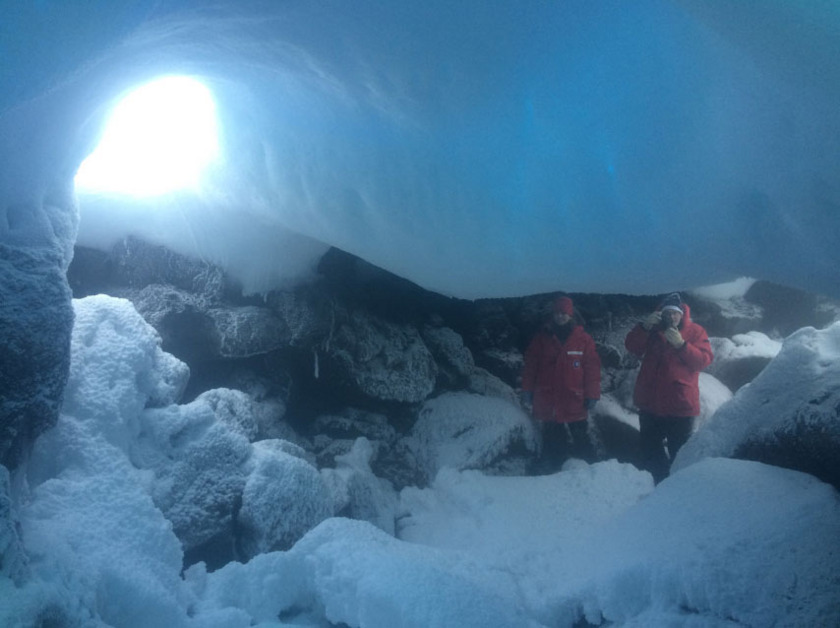


The passages seal off and whole new sections will open up – it’s kind of a weird feeling because the caves are vaguely familiar from last year so it can be quite disorienting”, Curtis explains. “I’ve been astonished by the differences in caves just from one field season to the next. The cave temperatures are between 32- 48 ☏ (0-6 ☌) all year, while the average surface temperature on Mount Erebus is -22 ☏ (-30 ☌).īut, the ice fumaroles are also very dark, humid and they’re constantly changing. Sauna is the warmest of the Erebus caves that Aaron has worked in, at about 40 degrees Celsius. “There’s nothing like Erebus in terms of the number and diversity”, claims Aaron Curtis who was working with the Mount Erebus Volcano Observatory at New Mexico Tech for several years, making the first program of mapping and monitoring the gas chemistry and microclimates of the caves.Īaron at Sauna Cave in 2010.

These ice towers, formed around gasses that escape from vents in the surface, stand up to 60 feet high sometimes.Ī few other volcanoes have a similar thing to Mount Erebus ice fumaroles – Mt Rainier, Mt Baker in the Cascades, Mt Melbourne in Antarctica and several in Iceland.īut, Mount Erebus is the most convenient and accessible place for the ice fumaroles studies. Steam coming out of volcanic vents in the ground freezes as it hits the cold air, creating chimneys of ice. This phenomenon is specific to volcanoes located in very cold areas, where gas and heat seeping through the volcano vent melt the snowpack above, carving out a cave. Mount Erebus, the second highest volcano in Antarctica is the site of various phenomena – from permanently exposed lava or so-called lava lake to breath-taking ice chimneys. These spectacular chimneys are actually ice caves and towers formed by volcano fumaroles and therefore are known as ice fumaroles. She has won numerous awards including the Carl Sagan medal from the American Astronomical Society and the Lowell Thomas medal from the Explorers Club.Antarctica has plenty of unique and fascinating features which bring many scientists to this continent. She has authored or co-authored 9 books, including “Antarctica: Earth’s Own Ice World”. She was a science team member of both the Galileo and Cassini missions and is currently studying whether Titan may be habitable. Her research expertise is planetary volcanology and she has studied volcanoes on Mars, Jupiter’s moon Io, and Saturn’s moons Titan and Enceladus. Rosaly Lopes is the Directorate Scientist for Planetary Science at the Jet Propulsion Laboratory. The talk will discuss their journey from the initial proposal to the publication of a book.ĭr. They explored the caves and ice towers on the flanks of Erebus, taking photographs and eventually generating original art depicting scenes in Antarctica that are analogs to those on other planets and moons. Rosaly Lopes will tell the story of their journey, discussing Antarctica’s infrastructure, the training necessary for working in the hostile conditions, and their work at the volcano.

The complex operations of Antarctica’s McMurdo station and outposts echo the types of strategies that future explorers will undertake as they set up settlements on the Moon and Mars. In 2016, Rosaly Lopes and artist Michael Carroll teamed up as fellows of the National Science Foundation to travel to Mount Erebus, Earth’s southernmost active volcano.


 0 kommentar(er)
0 kommentar(er)
